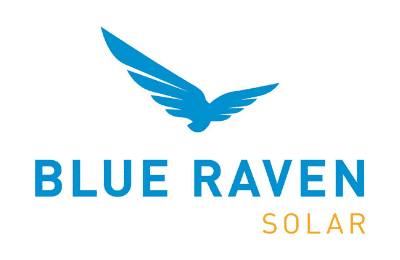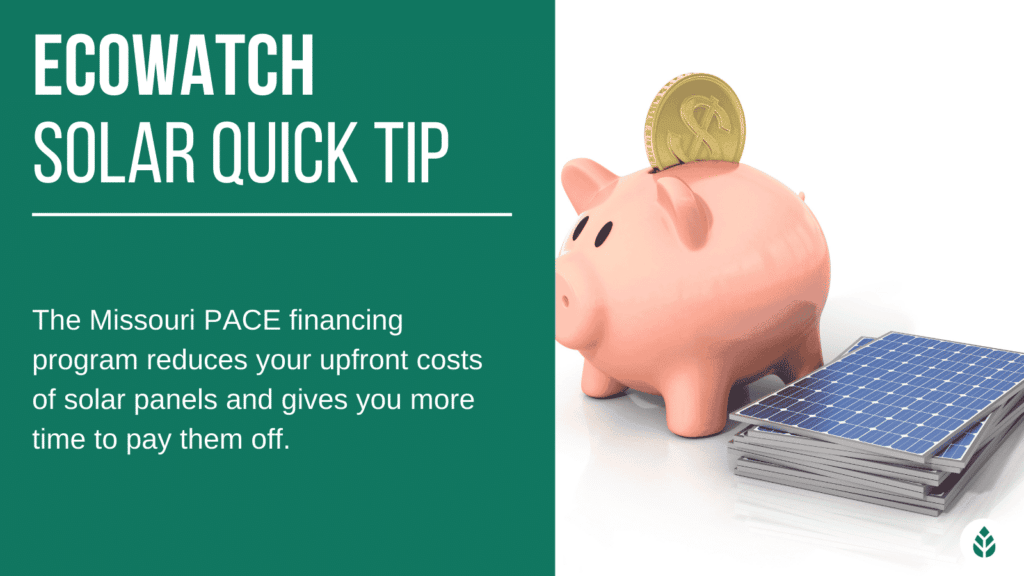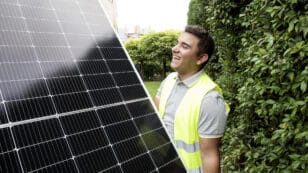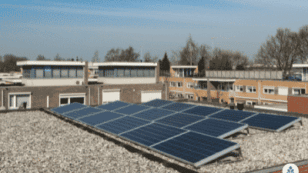 Reviews
Reviews
2024 Missouri Solar Incentives (Rebates, Tax Credits & More)
In this guide to solar incentives in Missouri, you’ll learn:
- How can solar incentives help make solar more accessible in Missouri?
- How do you file for the federal solar tax credit in Missouri?
- What solar incentives are the most valuable for Missouri homeowners?
Each product and or company featured here has been independently selected by the writer. You can learn more about our review methodology here. If you make a purchase using the links included, we may earn commission.
Do Missouri Solar Incentives Make It Affordable for Homeowners to Go Solar?
In Missouri, the state’s incentive programs make converting to solar energy accessible and affordable for homeowners. In fact nationwide, 1 in 4 homeowners plan to upgrade to solar energy in the next 5 years.
The average cost of converting to solar in Missouri is $32,760 before any incentives are applied. This total is about 10.01% higher than the national average of around $29,970. As you can see, your money doesn’t go quite as far when converting to solar in Missouri as it might in other states.
This difference is primarily because Missouri residents consume more energy each month than the national average — an average of 1,028 kilowatt-hours (kWh) per month as opposed to the national average of 881 kWh.1 That means larger and more expensive photovoltaic (PV) systems are required to offset your energy consumption in Missouri. The difference in consumption is so high, in fact, that solar arrays are more expensive in MO than they are in the U.S. despite the local average cost per watt — $3.12 — sitting well below the national average of $3.33.
However, Missouri has solar incentive programs that can help lower your effective system costs and increase your long-term energy savings. Missouri has better incentives than most other states despite its now-expired Renewable Portfolio Standard (RPS) goal to generate 15% of all state energy from renewable sources by 2015.2

Blue Raven Solar
Pros
- Industry-leading in-house financing
- Competitive pricing
- Excellent reputation
Cons
- Doesn't offer solar batteries (coming 2022)

Astrawatt Solar

Average cost
Pros
- Comprehensive service offerings
- Excellent reputation
- Award-winning company
- Educational, no-pressure sales approach
Cons
- Limited service area
- Relatively young company
The table below includes a comprehensive list of benefit programs available to solar customers in the state of Missouri. We’ll also include information on approximately how much money each perk can save you.
| Solar Incentives in Missouri | Incentive Type | Description | Occurrence | Estimated Dollar Amount You Can Save |
| Federal Solar Investment Tax Credit (ITC) | Federal | Credit to your income tax liability for 30% of your entire solar panel system value | One-time: Applied when you file your taxes for the year you install your solar panel system | $9,828 on average in Missouri |
| Show Me Property-Assessed Clean Energy (PACE) Financing | State | Provides affordable and accessible financing for solar equipment | One time: Goes into effect prior to installation when you apply for the program | Varies based on your system size, the solar company you choose and how you use the savings |
| Solar Property Tax Exemption | State | Exempts the value of your home solar equipment from your property tax assessment | Continuous: Applied to your property taxes after you convert to solar | Varies based on your property value, the cost of your system and your baseline property taxes |
| Set the PACE St. Louis | Local | Provides affordable and accessible financing for PV equipment | One time: Goes into effect prior to installation when you apply for the program | Varies based on your system size, the installer you choose and your loan terms |
| Net Metering | Local | Credits you for excess electricity production beyond what you use. Credits can offset future utility bills | Continuous: Always in effect | Varies based on your system size, your energy needs and your electricity production |
| Columbia Water & Light Rebate | Utility | Rebate for installing a solar system — earn up to $625 per kilowatt (kW) for the first 10 kW of your system, then $500 for each additional kW | One time: Applied after you install solar equipment | $6,250 on average in Missouri |
| Columbia Water & Light Financing | Utility | Solar financing program with low interest rates and terms of up to 10 years | One time: Goes into effect prior to installation when you apply for the program | Varies based on your system size, the installer you choose and your interest rate |
| Evergy (Kansas City Power & Light) Solar Rebate | Utility | Rebate of up to $0.25 per watt for PV equipment | One time: Applied once after you install solar equipment | $2,525 on average in Missouri |
| Empire District Electric PV Rebate | Utility | Rebate of up to $0.25 per watt for PV equipment | One time: Applied once after you install solar equipment | $2,525 on average in Missouri |
What Do Missourians Need to Know About the Federal Solar Tax Credit?
The federal solar credit is one of the most valuable solar incentives available to you as a Missouri resident, and the federal government makes it accessible to all first-time solar customers.
The credit is equal to 30% of your entire solar energy system cost, which gets applied to your income tax liability for the tax year you install your solar equipment. In Missouri, where the average solar energy system size required is 10.5 kW and costs $32,760, the 30% federal credit averages out to $9,828.
It’s important to note that this amount gets credited to your tax burden, so if you don’t owe taxes to the federal government, you won’t be able to take the credit. However, you can take a partial credit if you owe less than the full amount and apply any remaining credit to future tax years for up to five years.
The federal credit has been around since 2005, at which point it was also available at 30% of your entire system value. The percentage dropped to 26% in the early 2020s and was scheduled to dip again to 22% and disappear entirely in 2023.
However, thanks to the Inflation Reduction Act, the credit was renewed in 2022. The new rate schedule is as follows:
- The credit rate will be 30% for systems installed between 2022 and 2031
- The credit rate will drop to 26% in 2033
- The credit rate will drop to 22% in 2034
- The credit will no longer be available in 2035
The Inflation Reduction Act can help with solar affordability but it can also do much more, calculating your return is easier than ever with the help of tools like IRA calculators that ensure you’re not leaving an IRA money on the table.
How Do You Claim the Federal ITC in Missouri?
Applying for the federal tax credit is simple and should only take you a few minutes. We’ll outline the steps below to help you take full advantage of this solar perk.
- Step 1: Go to the IRS’s website and print out IRS Form 5695, which is the Residential Energy Credits form.
- Step 2: Fill out the form in its entirety. You’ll need to include the name and address of your installer and some basic information about your residential system, including its value and the address where it was installed.
- Step 3: When you or your accountant are ready to file your taxes, make sure to include your completed form. If you’re filing using accounting software like H&R Block or TurboTax, the program should automatically ask you if you’ve installed solar and provide a digital copy of the form for you to fill out.
EcoWatch’s Opinion of the Federal ITC in Missouri
If you only have time to file for a single incentive, make sure it’s the federal solar credit. The tax credit not only takes just a few minutes to file for but also provides the highest effective savings of any incentive available in Missouri.
Keep in mind that you can only benefit from this credit if you owe taxes each year. If your tax liability is $0 or the government owes you money, this credit will not provide any value to you. You can, however, take part of the credit and roll the rest over for up to five years.
If you expect to owe at least a few thousand dollars in taxes over the next five years, we recommend you take this credit.
What You Should Know About Show Me Property-Assessed Clean Energy (PACE) Financing in Missouri
PACE financing is a popular incentive across many states, including Missouri. This financing program provides accessible solar loans to homeowners in the Show-Me state. It’s a good alternative to lease options, which don’t lead to panel ownership nor provide the same warranty coverage.
The program uses your property value as collateral for a loan, and you pay monthly installments on your tax bill to keep prices as low as possible.
PACE and other solar financing programs are beneficial because they:
- Help make solar available to Missouri residents who cannot afford a cash purchase
- Still let you claim the federal credit and other incentives (unlike solar leases)
- Help keep the financing charges associated with your loan to a minimum
- Help you achieve a return on investment with your solar project
While you’ll pay more for your system over time with a loan — an average of around $5,000 more overall — the PACE program also gives you access to energy savings. The savings you can achieve with this financing program should be around $12,000. For comparison, the typical lifetime savings when buying a system in cash in Missouri — which provides the most savings over time — average around $33,870.
How to Claim PACE Financing in Missouri
Filing for the PACE program in Missouri is relatively straightforward, although it can be a bit time-consuming. We’ll outline the steps you’ll need to take below.
- Step 1: Go to the Missouri Clean Energy District’s (MCED) website to confirm if you are eligible.
- Step 2: Fill out the PACE application, which requires information about your property, your property taxes, your home value and your electric bills.
- Step 3: Follow the program guidelines. This includes choosing a program-approved installation company and providing their contact information to the MCED.
- Step 4: The payments for your system are added to your property tax bill, so you don’t have to worry about making payments manually.
EcoWatch’s Opinion of PACE Financing in Missouri
PACE financing can benefit some Missouri homeowners, but it’s certainly not for everyone. It can be a bit time-consuming to check eligibility and provide all the necessary information to proceed with your PACE solar installation.
The most significant downside to PACE financing is that the lien on your home travels with your property, similar to a home equity line of credit (HELOC). So if you sell your home before your loan term has ended, the new homeowner will have to assume responsibility for the payments.
This lien can make selling your property a challenge, and in some cases, could lead to buyers paying less for your property. In our opinion, you should opt for a cash purchase or a more traditional solar loan if you can afford it. PACE financing is best for homeowners who expect to live in their homes for 20+ years and cannot afford other payment options.
Watch Below: Learn How You Can Profit Off Of the Extra Energy Your Solar Panels Produce
What You Should Know About the Solar Property Tax Exemption in Missouri
Missouri exempts all solar equipment from property taxation, which means installing a solar system on your home will not make your taxes go up. This is great news, as it reduces the potential financial burden of converting to solar energy.
Normally, any home improvement that bumps up your home value will also cause a spike in your taxes. While solar is expected to boost your property value by around 4.1% in Missouri, the state’s property tax exemption prevents that boost from also causing an increase in your taxes.3
Given the average solar power system value of $32,760 in Missouri and the state property tax rate of 0.88%, this exemption should save you around $288 each year after your system is installed. That’s a total of around $7,200 over the lifespan of your panels.
How to Claim the Tax Exemption in Missouri
While the savings provided by this benefit program are generally low, it doesn’t require any work on your part to claim. The tax assessor’s office in your local municipality will not consider solar permits when determining the value your equipment adds to your home.
EcoWatch’s Opinion of the Tax Exemption in Missouri
The solar exemption for property taxes is a beneficial program that helps reduce the financial burden of going solar. Without it, you’d end up spending an additional $250 per year in taxes just for adopting solar energy.
Since the exemption doesn’t require any time or effort on your part, it’s a great incentive for Missouri residents.
What You Should Know About the Set the PACE Program in St. Louis
Set the PACE St. Louis primarily provides PACE financing — as we detailed above — for commercial solar customers. However, a subsection of the program also offers traditional low-cost solar loans for residential solar customers.
The program partners with YGrene and Fiona, two solar and home improvement financiers, to provide access to low-APR financing options with minimal down payment requirements. Applying for this program can help you access an affordable financing option so you can go solar without the upfront cost of a cash purchase.
The program is a good alternative to lease options, which are less appealing overall.
How to Enroll in the Set the PACE Program in Missouri
The process to enroll in this financing program is simple. We’ll lay out the steps below.
- Step 1: Check your eligibility by visiting the YGreen site4
- Step 2: Apply for the program by filling out a loan application
- Step 3: Once approved, use your financing to pay your chosen solar installation company
- Step 4: Make loan payments via YGreen’s or Fiona’s website
EcoWatch’s Opinion of the Set the PACE Program in Missouri
This program is a great option for commercial customers looking to convert to solar energy, and it also provides a decent financing option for residential customers. Loans with low APR and down payments, like those offered by this program, can help make renewable energy more accessible to Missouri residents.
The application process is simple and shouldn’t take long to complete, so the time investment is well worth it to access solar.
What You Should Know About Net Metering in Missouri
Net metering — also called net energy metering (NEM) — is an important incentive for solar customers in Missouri. Through interconnection with the electric grid, this billing policy allows you to overproduce energy with your solar array and bank the excess for later use.
In Missouri, net energy metering is mandated for all electric companies, which means you can utilize the program regardless of where in the state you live. Plus, the state sets the net energy metering rate for each kilowatt-hour (kWh) you generate in excess of what you use. The credit rate offered used to be equal to the retail rate, which is the best-case scenario, but it was downgraded recently by the Public Service Commission (PSC) in Missouri to the avoided cost rate. Many states are in the process of downgrading their NEM policies, so this isn’t much of a surprise.
For example, if you generate 1,000 kWh of solar electricity in July, but only consume 800 kWh, you can use a portion of the additional 200 kWh to pay down future electric bills. The exact amount of consumption you can offset depends not he credit rate your utility provider offers. In any case, this helps you offset more of your energy bill, which leads to greater savings over time.
Net energy meeting guidelines in Missouri also prohibit utility companies from charging an access fee to use the program, which is another bit of good news for solar customers like you. The PSC recently implemented “Easy Connection,” which makes the application process easier and faster as well.
It’s important to note that net energy metering policies are changing in many states, especially in the wake of California rolling out net metering 3.0. If the rate gets downgraded again in Missouri, or if the policy gets discontinued, savings will decrease. Additionally, solar batteries will become more prevalent because they offer effective one-to-one net metering. Batteries increase installation costs by between $10,000 and $20,000, but they will also help maintain those high electric bill savings that make solar so worthwhile.
How to Enroll in Net Energy Metering in Missouri
Net energy metering is another simple incentive to enroll in, and for most property owners, it won’t take any work at all. You can follow the steps below to ensure you opt-in to this incentive.
- Step 1: Contact your utility provider to confirm that you have a bi-directional electric meter installed on your home. This is required to take part in net energy metering. In many cases, you can use an “Easy Connection” form, which expedites the application process.
- Step 2: Have your residential solar system installed. Provided you have the right meter, you’ll automatically start banking energy credits.
- Step 3: It’s a good idea to keep a close eye on your first few electric bills after opting into net energy metering. You may not see a $0 balance, but you should see a reduced amount. Make sure you can see a log of the electricity you’ve passed to the electric grid.
EcoWatch’s Opinion of Net Energy Metering in Missouri
Net energy metering is an outstanding incentive and has proven to be one of the most valuable perks in the country. Missouri’s net energy metering program is very beneficial for residents, as it’s currently mandated for all utility providers. However, the credit rate was recently dropped, so the value of the policy is lower. It’s also possible that the rate will drop again or that the policy will disappear entirely, which would make batteries necessary for maximizing solar savings.
Without net energy metering, offsetting your electric bill in Missouri would be quite difficult. With the benefits of this program, most residents with appropriately-sized solar arrays should be able to offset a good portion of their utility bills, if not the entirety of them.
Enrolling in net energy metering requires just a quick call to your electric company. It should take just a minute or two to confirm you’re eligible, which can help you maximize your energy savings — an average of $33,870 over the life of your system.
What You Should Know About Local Solar Incentives in Missouri
Missouri is also home to a handful of local solar benefit programs, all of which are offered by specific electric companies. We’ll list the more prominent local incentives below. If you’re a customer of any of the below companies, we recommend taking advantage of these benefits.
- Columbia Water & Light Rebate: This is a rebate that offers between $375 and $625 per kW for the first 10 kW of PV equipment you install on your home. After that, the rebate is between $300 and $500 for all successive kWs up to 50 kW. The average Missourian will get back between $4,050 to $6,750 with this rebate. It only takes a few minutes to apply and is well worth your time if you’re a Columbia Water & Light customer.
- Columbia Water & Light Solar Financing Program: Columbia Water & Light also provides access to affordable solar financing for its customers. You can finance up to $15,000 with this program with an interest rate of 1% for up to three years, 3% for four to five years or 5% for six to 10 years.
- Evergy Rebate for Solar: Evergy’s rebate for PV equipment provides a decent return for how simple the application process is. You can earn up to $0.25 cash back for each watt you install. For the average 10.5 kW system in Missouri, that’s around $2,525 in rebates.
- Empire District Electric Rebate for Solar: If you’re a customer of Empire District Electric, you can get a similar rebate of up to $0.25 per watt of PV equipment installed. Again, that’s an average of $2,525 for Missouri residents, who typically need a 10.5 kW system.
Which Tax Incentives Are Best in Missouri?
Above, we’ve listed all of the incentives available to solar customers in Missouri. Some customers, however, may find that some of these perks aren’t worth considering. Some benefit programs take time to apply for and qualify for, and they may not always provide the same benefits as others.
Below, we’ll include a quick list of what we believe are the best incentives in Missouri. In our opinion, these are the perks you should consider, even if you have limited time to apply to incentive programs.
Federal Tax Credit
The federal credit is, by far, the most beneficial solar incentive available in Missouri. It provides an average credit of around $9,828 for Missourians, which can effectively bring down the cost of your solar panels by 30%. Best of all, filing for the federal credit takes just a few minutes, so the time investment is well worth it.
Unlike some other incentives, this perk is available to all Missourians, so we can say with confidence that you’ll have access to it, at least until the percentage dips in 2033.
Net Energy Metering
Net energy metering is usually cited as one of the most beneficial solar incentives in the U.S. It improves the value of your solar system by helping you save more money on your energy bills over time and reducing your panel payback period.
Net energy metering is also easy to take advantage of. For most customers — who have bi-directional meters installed already — simply installing solar will opt them into net energy metering. If you don’t have a two-way meter, a quick call to your electric company should fix that, and at no cost to you.
If you have access to net metering, make sure you take it. It can help drive up your savings over time and pay off your system more quickly.
Local Solar Rebates
Finally, if you have limited time to dedicate to applying for solar incentives in Missouri, we recommend you check to see if your electric company offers any rebate programs. You should have a rebate available to you if you’re a customer of one of the following electricity providers:
- Columbia Water & Light
- Evergy
- Empire District Electric
The rebate amounts range from an average of $2,525 to around $6,750. These are sizable rebates, and they require filling out a simple form. Again, the time you’ll take to apply for these rebates is more than worth it.
What Missourians Need to Know About SRECs/TRECs?
Solar renewable energy certificates (SRECs) are credits you can earn for all of the energy your solar panels produce.
In states that have SREC markets, customers can sell their SRECs to utility companies for a profit. Companies buy SRECs in most cases to reach the Renewable Portfolio Standard (RPS) goals imposed upon them by the local Public Utilities Commission (PUC).
Missouri currently doesn’t have an SREC market so these credits are not available to solar customers in the area.
What’s the Near-Term Outlook for More Incentives in Missouri?
Missouri currently has solar incentives available that can make converting to solar energy more appealing for residents. Aspiring customers might wonder if incentives will change in the future, as this may help you plan the best time to convert to solar energy.
It’s impossible to tell with certainty how incentives are expected to change over time, but in our opinion, the perks available in Missouri are more likely to get worse than they are to improve, especially in the case of net metering.
Net energy metering policies across the country are changing regularly, and they often change for the worse, as they did in mid-2024 in California. Missouri’s current net energy metering program is decent, as it’s a mandated policy throughout the state but only offers the avoided cost rate for exported electricity. The credit rate could drop to a lower and less appealing rate, however, as is the case in many other states. This is especially true if net metering 3.0 rolls out, which it’s expected to in the coming years in Missouri.
It’s also possible that the local rebate programs from individual utility companies will disappear. In many cases, rebates are offered to help a state meet its renewable energy goals.
Missouri had an RPS goal of producing 15% of its electricity from clean energy sources by 2021, but the end date has come and gone and no new goal has been set.5 Some utilities that previously offered rebates — like Ameren Missouri — have already ended those programs in response. If Missouri sets a new RPS goal, we could see new incentives or improvements to existing ones, but there’s no evidence that a new goal is in the works.
Finally, the federal credit was recently extended by 10 years and is now set to expire in 2035. The credit rate will drop in 2033, though.
The cost information presented in this article is derived from a comprehensive analysis, incorporating data from multiple industry sources. The average cost per watt per state was calculated based on figures from Consumer Affairs, Energy Sage, and Berkeley Lab’s Electricity Markets & Policy Department. Additionally, monthly energy consumption and the average monthly cost of electricity were sourced from the U.S. Energy Information Administration, ensuring a well-rounded and accurate representation of the information presented.
FAQ: Missouri Solar Incentives
As a trusted source of the solar industry, EcoWatch fields many questions from Missouri homeowners who are interested in lowering the costs of going solar. If you have specific questions that aren’t answered here, reach out to our team of solar experts at solar@ecowatch.com.
The Inflation Reduction Act extended the federal credit to 2034 from 2024. Originally, the federal credit was scheduled to drop from 26% to 22% in 2023 and then no longer be available in 2024. The Inflation Reduction Act extended the credit by 10 years, which is great news for solar customers in Missouri.
Additionally, the legislation is providing increased incentives — in the form of credits to tax bills — for electric vehicles. The credit amount is up to $7,500. It also provides rebates and credits for energy efficiency upgrades, like installing energy-efficient appliances or solar water heaters.
There are currently no concrete plans for Missouri to reduce solar incentives in the next two years. However, the net metering program could become less beneficial in the future, as more and more states are decreasing credit rates and disposing of NEM policies altogether. We can see the credit rate dropping below the current avoided-cost rate, especially since the state has no current renewable energy goal.
Missouri currently does not offer a sales tax exemption for PV systems. It’s unlikely that this perk will be added to the state’s available incentives any time soon.
Top Solar Installers in Missouri Cities
Comparing authorized solar partners
-
- Industry-leading in-house financing
- Competitive pricing
- Excellent reputation
- Doesn't offer solar batteries (coming 2022)
A+Best Solar Financing2014Trina Solar, Canadian Solar, SolarEdge, Silfab, SunPower25-year manufacturer warranty; 10-year workmanship warranty, 2-year production guarantee
Having trouble deciding? Click below and use our process to receive multiple quotes instead:

 233k
233k  41k
41k  Subscribe
Subscribe 






